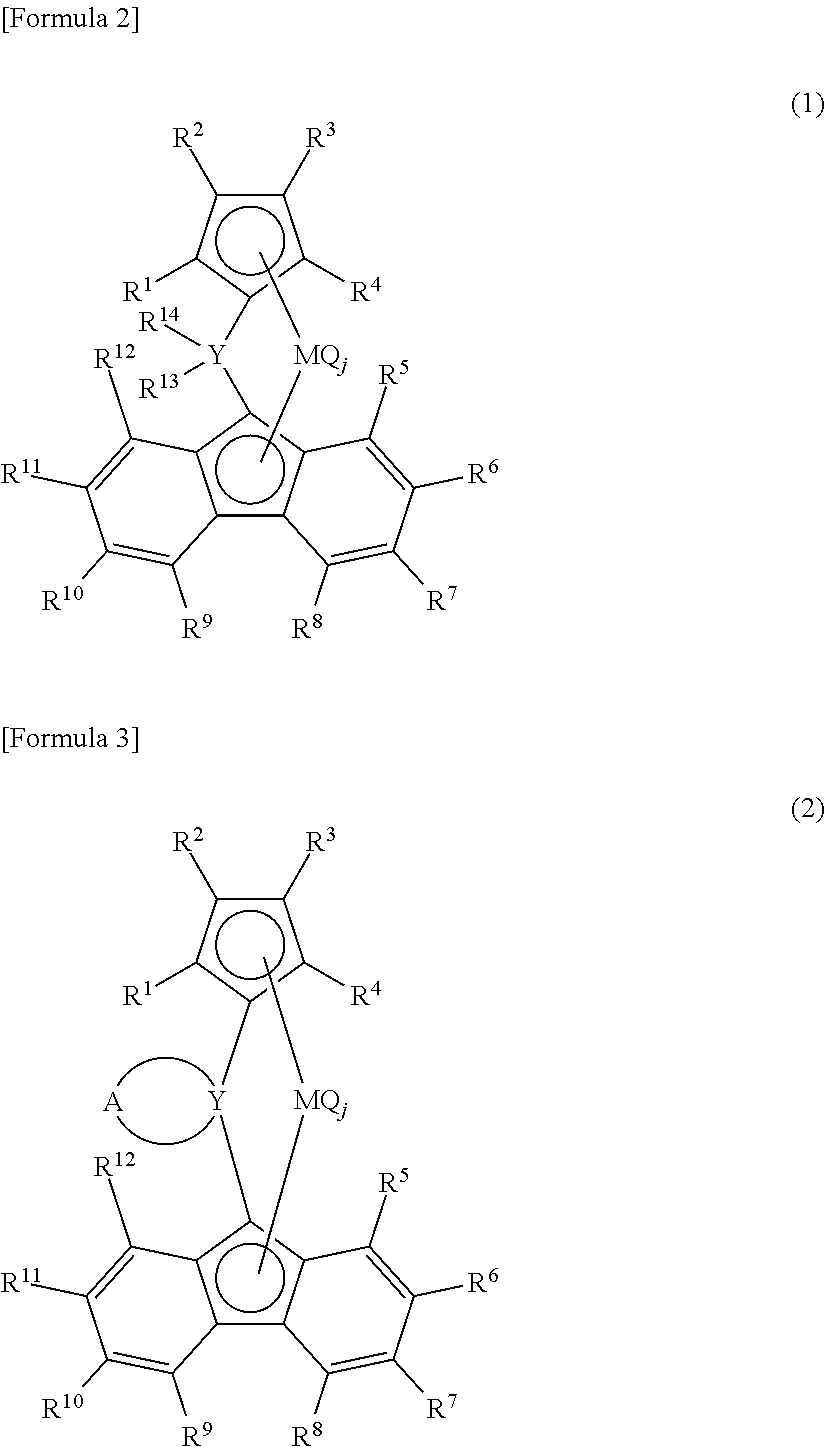4-methyl-1-pentene polymer, resin composition containing 4-methyl-1-pentene polymer, masterbatch thereof, and formed product thereof
a technology of pentene polymer and resin composition, which is applied in the direction of synthetic resin layered products, film/foil adhesives, metal layered products, etc., can solve the problems of oily smoke and malodor at high temperatures, the resin pellets still in a solid state slip in the extruder and are not properly conveyed, and the phenomenon is called discharge pulsation or surging, etc., to achieve excellent mold releasability and blocking resistance resistance, the mold
- Summary
- Abstract
- Description
- Claims
- Application Information
AI Technical Summary
Benefits of technology
Problems solved by technology
Method used
Image
Examples
examples
[0399]While the present invention will now be more specifically described in the following examples, the present invention is not limited to these examples.
[0400]In the present invention and examples, unless otherwise specified, properties are measured in the following manner.
Composition
[0401]Compositions were determined by 13C-NMR spectrum analysis.
[0402]Intrinsic viscosities were measured in a decalin solvent at 135° C. The specific viscosity lisp of approximately 20 mg of a sample dissolved in 15 ml of decalin was measured in an oil bath at 135° C. After the decalin solution was diluted with 5 ml of the decalin solvent, the specific viscosity lisp was measured in the same manner. This dilution was performed twice. ηsp / C extrapolated to a concentration (C) of 0 was determined as the intrinsic viscosity.
[η]=lim(ηsp / C)(C→0 [molecular weight])
Molecular Weight Distribution
[0403]The ratio (Mw / Mn) of weight-average molecular weight (Mw) to number-average molecular wei...
examples 1 to 9
Total Haze (Examples 1 to 9 and Comparative Examples 1 to 6)
[0444]The total hazes of films having the same thickness were measured in accordance with JIS K7105.
Tensile Strength
[0445]The tensile yield stress was measured in a tensile test at 23° C. and a speed of 200 mm / min in accordance with JIS K6781.
Film Appearance
[0446]The film appearance was visually inspected and evaluated in accordance with the following criteria.
[0447]Good: transparent and uniform
[0448]Poor: opaque or streaks
B Value
[0449]The B value was determined through 13C-NMR spectrum analysis by a method described in Japanese Unexamined Patent Application Publication No. 2007-186664.
Stereoregularity (mm or mmmm)
[0450]Stereoregularity was determined by 13C-NMR spectrum analysis.
[0451]The isotactic triad fraction (mm) was determined by the method described in International Publication WO 2004-087775 on page 21 line 7 to page 26 line 6.
[0452]The isotactic pentad fraction (mmmm) was calculated by the method described in a pr...
synthesis example 1
Synthesis of 4-Methyl-1-Pentene Polymer (1-b)
[0459]A 500 ml side-arm flask was charged with 150 g of a 4-methyl-1-pentene polymer (DX820 manufactured by Mitsui Chemicals, Inc.) and was heated to 360° C. on a sand bath while nitrogen was passed through the flask. After the polymer on the wall of the flask was melted, the temperature was held at this temperature for two hours while stirring to thermally decompose the 4-methyl-1-pentene polymer. Cooling to normal temperature yielded a pyrolysate of the 4-methyl-1-pentene polymer. The pyrolysate had an intrinsic viscosity [η] of 0.17 dl / g and Mw=21700, Mn=4840, and Mw / Mn=4.48, as determined by GPC. The percentage A (% by mass) of a component having a polystyrene equivalent molecular weight of 1000 or less in the polymer was 3.94, and the number of terminal double bonds was 3.6 / 1000 carbon atoms. Table 1 shows the properties of the pyrolysate.
PUM
| Property | Measurement | Unit |
|---|---|---|
| Tm | aaaaa | aaaaa |
| Tm | aaaaa | aaaaa |
| total light transmittance | aaaaa | aaaaa |
Abstract
Description
Claims
Application Information
 Login to View More
Login to View More - R&D
- Intellectual Property
- Life Sciences
- Materials
- Tech Scout
- Unparalleled Data Quality
- Higher Quality Content
- 60% Fewer Hallucinations
Browse by: Latest US Patents, China's latest patents, Technical Efficacy Thesaurus, Application Domain, Technology Topic, Popular Technical Reports.
© 2025 PatSnap. All rights reserved.Legal|Privacy policy|Modern Slavery Act Transparency Statement|Sitemap|About US| Contact US: help@patsnap.com



